At a glance
Many dairy foods naturally fit into a low-carb lifestyle, but the best dairy products to have on keto are minimally processed, low in carbs, and rich in nutritional value. Knowing how to choose high-quality dairy can support healthy digestion, nutrient absorption, and fat intake on a ketogenic diet.
The best dairy products for keto are high in healthy fats, low in carbs, and free of added sugar–helping you stay in ketosis while enjoying rich, satisfying flavors.
From grass-fed butter to full-fat yogurts, these choices provide essential nutrients, including vitamin D and calcium.
Let’s explore which dairy options best suit your keto goals that offer both nutritional value and versatility for your everyday meals.
Are dairy products healthy?
Whole milk and full-fat dairy products are rich sources of essential nutrients such as calcium, phosphorus, and protein, which are vital for maintaining strong bone density and reducing the risk of osteoporosis.
Other dairy foods, especially fermented types, such as Greek yogurt and kefir, can promote digestive health and may contribute to optimal heart function.
This has been confirmed by a study published in Nutrition Reviews, which highlights that yogurt consumption positively impacts cardiovascular outcomes, such as improved cholesterol and lower blood pressure.1
However, consuming large amounts of processed dairy or those high in added sugars and saturated fat has been associated with an increased risk of cardiovascular disease and metabolic issues.
In addition, for individuals with lactose intolerance or milk allergies, dairy can cause gastrointestinal discomfort or allergic reactions.
The nutritional role of milk and dairy products varies depending on the type, quality, and personal dietary needs, including those of children, older adults, and pregnant women.
Watch the video below to learn about the best and worst dairy products.
Benefits of consuming dairy products
Incorporating high-quality dairy foods into a nutritious diet can offer a range of health benefits.
Here are five health benefits of regularly consuming dairy.
1. Promotes bone health
Dairy products are a primary source of calcium, a critical nutrient for bone health, as it helps maintain bone structure and mineral density.
Because of calcium’s vital role in skeletal strength, it plays an important role in reducing the risk of age-related bone loss.
2. Supports muscle function and recovery
Milk, yogurt, and cheese offer high-quality protein, which assists in muscle repair and maintenance.
Research published in The Journal of the International Society of Sports Nutrition reports that cow’s milk is an excellent source of protein and calcium, as well as other nutrients that support muscle repair by increasing amino acid levels in the bloodstream.2
This is particularly beneficial for those who regularly exercise or older adults, when preserving lean muscle mass becomes more important.
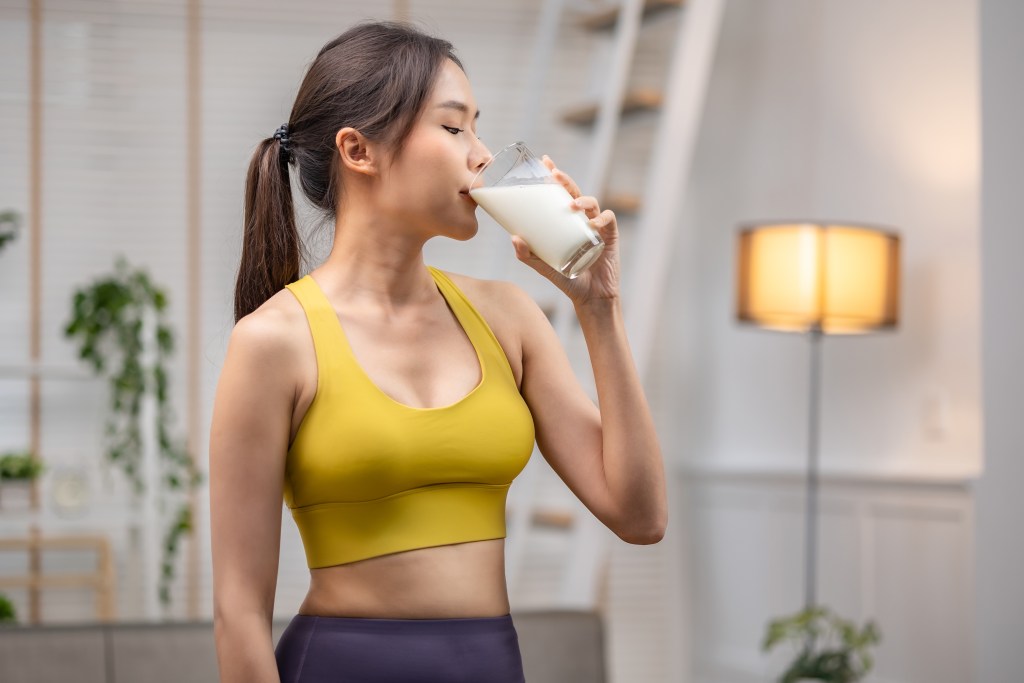
3. Helps maintain a healthy body weight
A study published in Nutrients showed that consuming at least two servings of dairy foods daily, or about 55 grams of whey protein, can have benefits for body weight and composition.3
This is likely due to the high-quality protein and bioactive compounds in dairy, which help regulate appetite, boost metabolism, and support muscle maintenance.
4. Enhances nutrient absorption
Fat-soluble vitamins, such as A, D, E, and K, require dietary fat for absorption.
Full-fat dairy products not only contain most of these essential vitamins but also enhance their intestinal absorption, making them an excellent addition to meals that offer fat-soluble nutrients.
5. Support electrolyte balance
“Milk and other dairy products naturally contain fluids and electrolytes, including potassium and sodium, which play a vital role in maintaining fluid balance,” explains Dr. Berg. “This makes them a functional option for hydration, especially after physical activity or during hot weather.”
In addition, the nutrient profile of dairy foods supports muscle function and helps replenish essential minerals lost through sweat and urine.
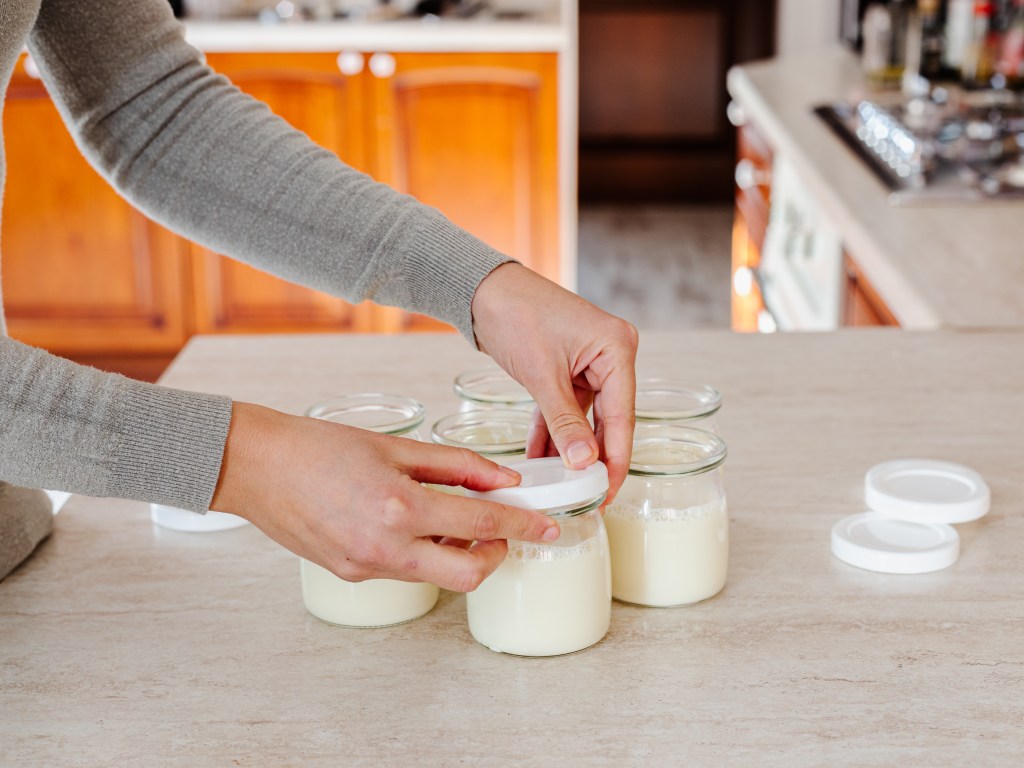
The best dairy products for a keto diet
Choosing the right dairy products is key for maintaining ketosis while getting valuable nutrients. The ideal options are high in fat, low in carbs, and minimally processed for optimal nutritional benefits.
Here are five of the best dairy products for a keto diet.
1. Full-fat yogurt
Full-fat yogurt contains naturally occurring probiotics, which, when labeled as containing live and active cultures, have been linked to better gut health and digestive functions.
In addition, the higher fat content promotes satiety, helping reduce the urge to snack between meals.
Unlike sweetened yogurts, plain full-fat versions typically offer less lactose and no added sugars, making them more suitable for those following a Healthy Keto® diet.
Full-fat yogurt can be enjoyed alone or combined with nuts, seeds, or low-glycemic fruits such as berries for a more filling meal.
2. Lactobacillus reuteri yogurt
Lactobacillus reuteri (L. reuteri) yogurt is a fermented dairy product made with the probiotic strain L. reuteri, known for its potential role in supporting gut health.
Opting for homemade versions allows complete control over ingredients and fermentation time, minimizing sugar content and maximizing health benefits.
Furthermore, the prolonged fermentation process reduces lactose content, which may make it easier to digest while also increasing concentrations of health-promoting probiotic microbes.
3. Heavy cream
Heavy cream is a high-fat dairy product that contains only small amounts of lactose and minimal carbs, making it a staple in many keto meal plans.
Keto is a high-fat dietary pattern, and with around 36 to 40 percent of milk fat, heavy cream can be a practical way to help meet this recommendation.
Moreover, its thick, smooth texture adds richness to coffee, soups, sauces, and desserts without significantly increasing carb intake.
Choose plain, unwhipped versions without added stabilizers or sweeteners for best results.
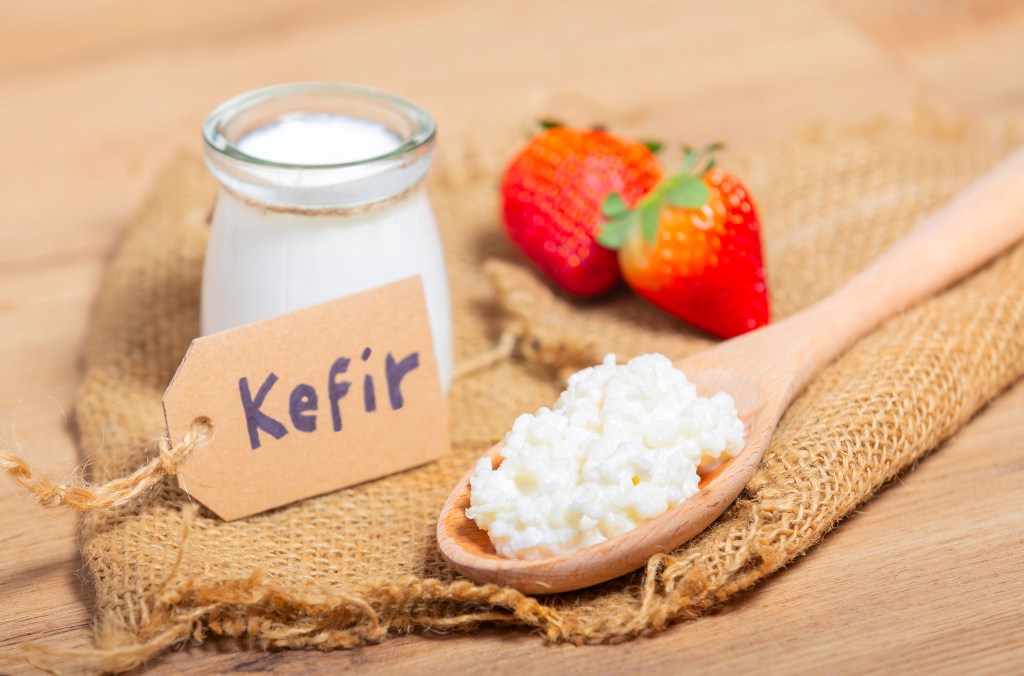
4. Kefir
Traditional kefir is a fermented dairy drink made from milk and kefir grains, known for its probiotic content and tangy flavor.
Homemade or low-carb alternatives, made with heavy cream, coconut milk, or extended fermentation, can significantly reduce sugar content while preserving the drink’s probiotic benefits.
Furthermore, research published in Foods suggests that kefir may offer a range of health-supporting properties, such as promoting a balanced gut environment and providing antioxidant and anti-inflammatory effects.4
5. Grass-fed butter
Butter is a highly concentrated source of dairy fat, containing about 80 percent fat and only trace amounts of carbohydrates, making it an ideal ingredient for keto dieters.
When added to meals containing vegetables or meats, butter supports the absorption of fat-soluble vitamins, including A, D, E, and K.
It’s best to opt for grass-fed varieties whenever possible, as these products offer higher levels of beneficial fatty acids, including conjugated linoleic acid (CLA) and omega-3 fats.
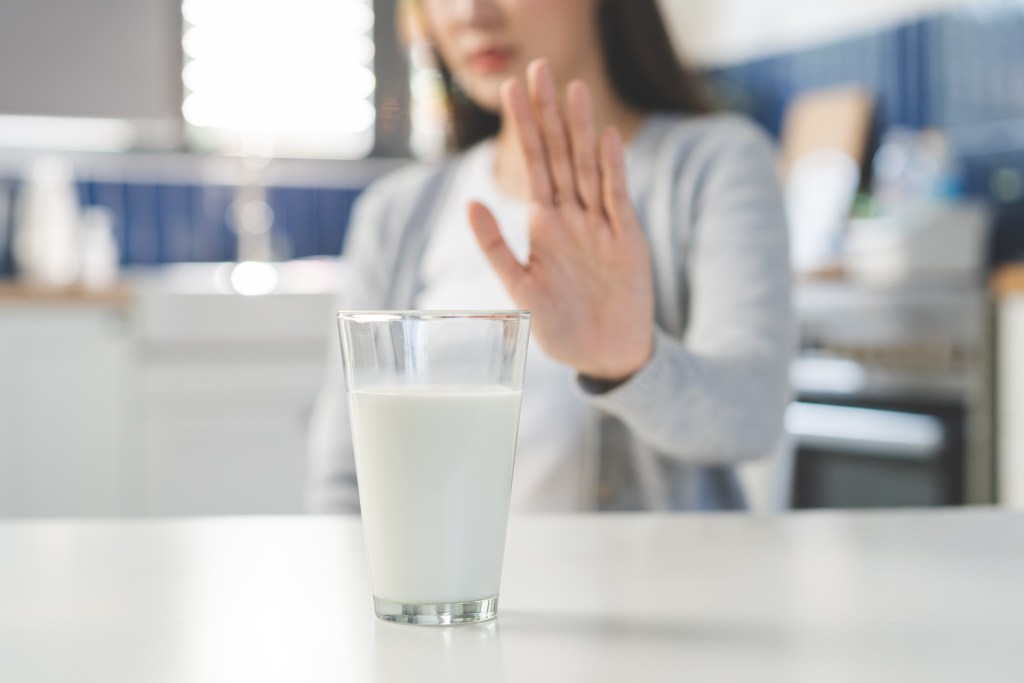
Dairy products to avoid on keto
While some dairy products fit well into a ketogenic lifestyle, others contain hidden sugars, excess carbs, or too little fat.
To stay on track with a nutritious low-carb diet, it’s crucial to recognize which dairy-based items should be avoided to prevent getting kicked out of ketosis.
Below are common dairy products that may disrupt ketosis:
- Sweetened yogurts
- Flavored milk, including chocolate and strawberry
- Low-fat dairy products labeled fat-free, skim milk, or diet milk
- Condensed or evaporated milk
- Ice cream and frozen yogurt
- Soy milk (sweetened)
- Oat milk
- Flavored dairy-based coffee creamers
- Processed cheese
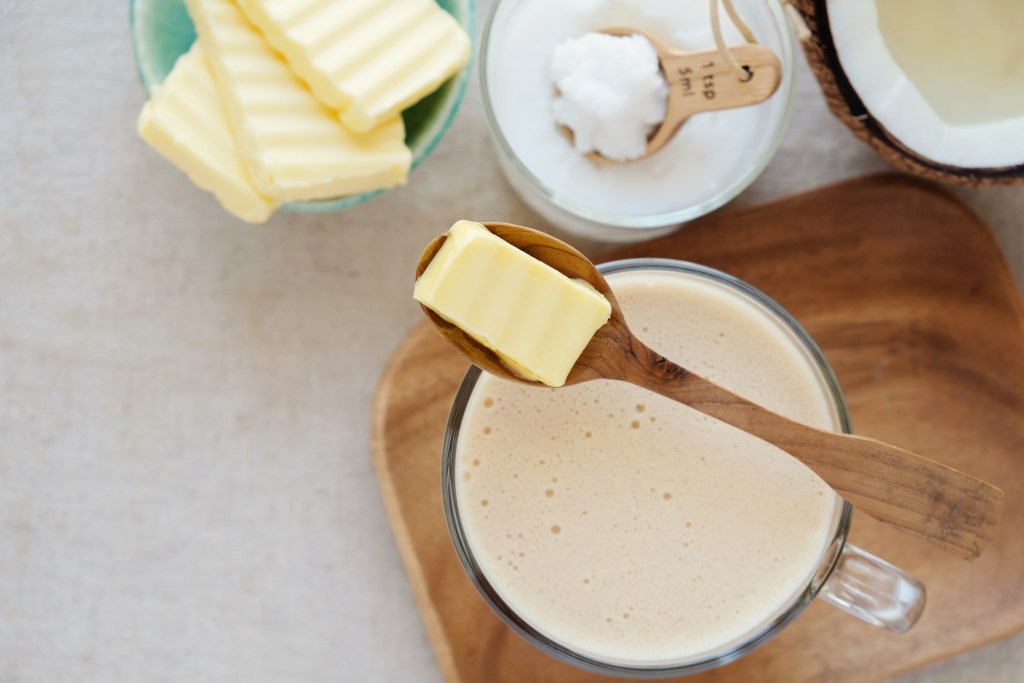
How to choose high-quality dairy
Selecting high-quality dairy begins with knowing how the product is sourced and processed.
Grass-fed dairy comes from animals that primarily graze on pasture, which can enhance the nutritional profile of the milk by increasing levels of fat-soluble vitamins like A and E, as well as beneficial fatty acids such as omega-3s and CLA.
These products also tend to have more beta-carotene, a precursor to vitamin A that gives grass-fed butter its deeper yellow color and supports immune function and vision.
Choosing organic dairy adds another layer of quality, helping reduce exposure to synthetic pesticides, antibiotics, and added hormones.
To maximize health benefits, choose products with short ingredient lists and no added thickeners, preservatives, or artificial flavors.
Highly processed items, such as flavored yogurts, dairy-based desserts, or shelf-stable cheese products, often contain hidden sugars and fillers that don’t align with Healthy Keto principles.
Key takeaways
- The best dairy products for keto are full-fat, low in carbohydrates, and minimally processed, offering healthy fats, protein, and other essential nutrients.
- Some of the healthiest keto-friendly dairy options include unsweetened, grass-fed full-fat yogurt, Lactobacillus reuteri yogurt, heavy cream, kefir, and butter.
- Fermented and full-fat dairy products can contribute to digestive balance, support overall gut health, promote nutrient absorption, and enhance satiety.
- Choosing high-quality dairy, including grass-fed and organic options, can provide more beneficial fatty acids, fewer additives, and a cleaner ingredient profile.
- Sweetened yogurts, flavored milks, low-fat dairy products, processed cheeses, and dairy-based desserts often contain more carbs, fillers, and hidden sugars that may interfere with ketosis.
FAQ
1. What are the best dairy products for a keto diet?
The best dairy products for a keto diet are high in fat and low in carbs, including butter, heavy cream, kefir, and Lactobacillus reuteri (L. reuteri) yogurt. These options provide healthy fats, beneficial probiotics, and essential nutrients without interfering with ketosis.
2. Which dairy products have the fewest carbs?
Milk and dairy foods with the fewest carbs include butter, heavy cream, cream cheese, and hard cheeses, including Parmesan or cheddar, as they contain minimal lactose.
3. Is cutting out dairy good for you?
No, dairy offers essential vitamins and minerals that support a healthy body. However, individuals who are lactose intolerant, have dairy allergies, or have specific dietary sensitivities may benefit from avoiding dairy.
4. Is Greek yogurt keto-friendly?
Greek yogurt can be keto-friendly when it’s plain, full-fat, and unsweetened. It has fewer carbs and more protein than regular yogurt, making it a better option for low-carb eating. Always check the label, as some brands add sugars or thickeners that can increase the carb count.
5. Can you drink almond milk on keto?
Yes, dairy alternatives such as plant-based almond milk can fit into a keto diet when it’s unsweetened and free from preservatives.
For the best quality, choose lactose-free milk that’s free from additives like stabilizers, gums, and artificial flavorings, as these can impact digestive health and reduce nutritional value.
Sources
- https://pmc.ncbi.nlm.nih.gov/articles/PMC8579104/ ?
- https://pmc.ncbi.nlm.nih.gov/articles/PMC6503439/ ?
- https://pmc.ncbi.nlm.nih.gov/articles/PMC4963870/ ?
- https://pmc.ncbi.nlm.nih.gov/articles/PMC8226494/ ?


















